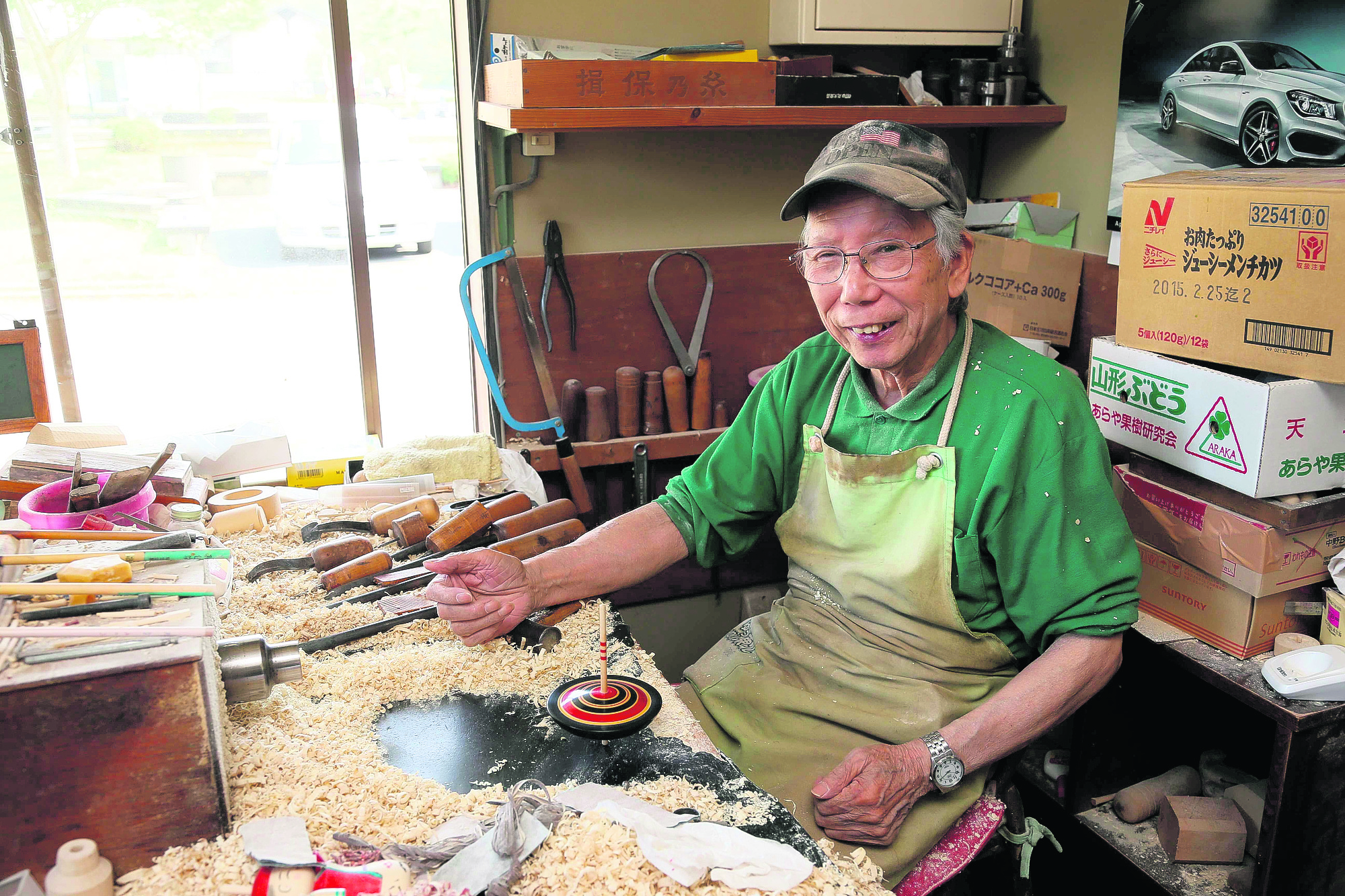
It once was thought that the Japanese tradition of carving Edo-style spinning tops had been lost. It turned out it had just gone on the road to northern Japan — and some of it ended up in America as well.
While they’re called tops, these go beyond simple spinning disks. Many are more like carved, wooden figures, and might depict scenes with characters that dance, transform or fight. On one, an ogre disguised as a priest bangs a gong when you spin his hat; on another, two discs illustrated with a dog and a robber chase each other around. Figures from folklore and theater are represented, and whimsical scenes like two frogs sumo wrestling.
More than just playthings, the tops were traditionally used for street performances, and involve original creations, not just repetitive copies.
“They have a very varied history across different social groups and classes,” says Paula R. Curtis, a Ph.D. candidate in history at the University of Michigan. “Part of it is the artisans putting themselves into the work, interpreting their experiences and cultural background through these tops.”
One such artisan is Michiaki Hiroi. His was the last family making tops in Tokyo when they moved to Sendai in the north of Japan after the Second World War. His father made a living making the woodcrafts of that region, and Hiroi initially followed in his footsteps. Then one day a collector who knew about the Edo style came to the shop and discovered who he was. “This person said, oh my God, I’ve been looking for you forever,” says Curtis.
Hiroi was inspired to begin making the tops and taking on apprentices. While the stereotype of craft apprenticeships in Japan is that they’re hard to break into and not welcoming to women and foreigners, Hiroi didn’t discriminate. One of his apprentices was Janell Landis, an American who came to Japan as a missionary and taught at a university in Sendai for 30 years.
When she became his apprentice in 1982, Hiroi encouraged her to bring her own experiences and culture to the craft. Where his tops might represent a figure from a Noh drama, hers included Huck Finn, Tom Sawyer and Cinderella. Instead of Japanese folklore, they reflected the stories important to her, such as a Christmas tree and a scene of the manger with baby Jesus.
If Christmas is fair game as a subject, then what makes a top Edo-style? Curtis, project manager of an oral history website about Landis and Hiroi, says that Hiroi’s answer focuses on the tops’ spirit: “He’s very insistent on that when he talks about them: When people look at them, it brings them a sense of joy and playfulness,”
That response might seem evasive or frustrating — aren’t you supposed to be able to identify a school of arts or crafts from how it looks? Not necessarily, according to Tamara Joy, curator of the Morikami Museum in Delray Beach, Florida. For Japanese crafts, a style is often distinguished by where it comes from and who is teaching it, rather than certain patterns or techniques.
But the term Edo also has deep cultural and historical resonance that is reflected in these tops, says Joy, whose museum owns a collection of Hiroi’s work that Landis brought back when she returned to the US in 1995.
Edo is the old name for Tokyo, but it’s also the name of the era from 1603-1868, a period that saw the development of a new middle class with more free time and spending money. This resulted in an explosion of the arts and culture. These tops are part of that bigger picture, Joy says.
Often, they contained subversive commentary about the ruling classes. “There was a lot of sticking it to the people who were in charge,” says Joy. This had to be subtle: perhaps a play that used historical characters with parallels to the present, or a performance with elaborate tops that actually told a story.
One of Joy’s favorites in the collection represents a common figure of fun, the spear-bearer who led samurai processions. Paintings and illustrations mock his self-importance. “His chest is all puffed up, and he’s got a smug look on his face,” says Joy. “You couldn’t directly make fun of the samurai, but you could poke at them and their egos through this character.”
On Hiroi’s top, the figure’s spear moves around clumsily when his head is spun. “You could see the same character in a half-million-dollar painting,” Joy says, “and he made his way into a top.”q















